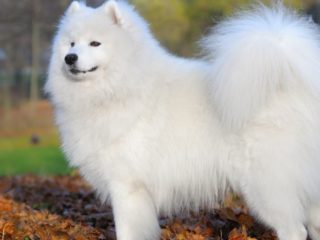One of the most expressive parts of our pups is their tails. Their long fluffy tail is an extension of their personalities giving us clues into what they are feeling and thinking.
It’s interesting to me that tails can look so different from dog to dog even within the same breed. This can sometimes make it confusing when you have a lot of questions about your dog’s tail.
The Shetland Sheepdog has a moderately long tail that is set low and when at rest lays along the back edge of its hind legs. When Shelties are alert or working the tail is slightly lifted but not curved up or over its back.
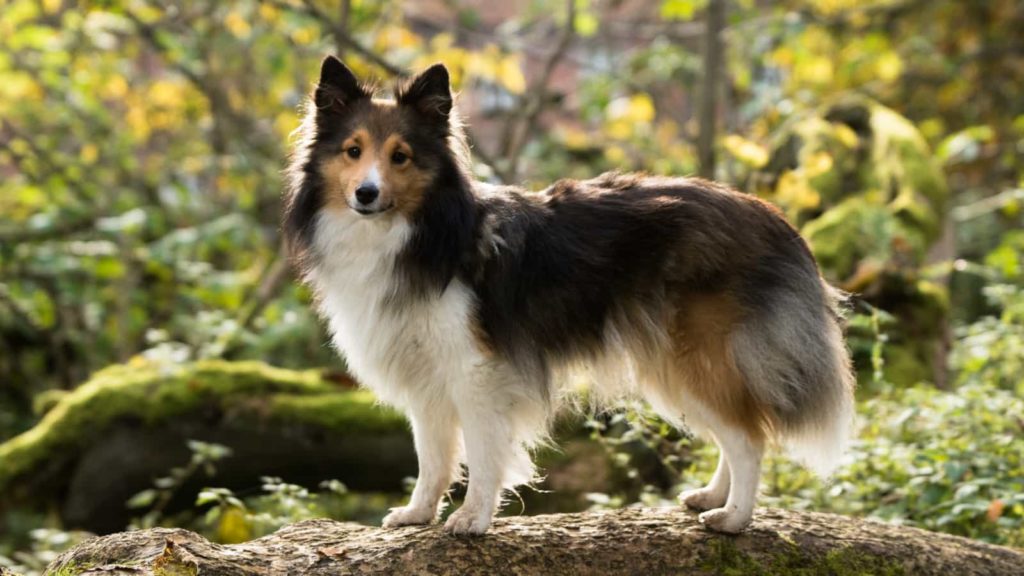
So how do you know if your Sheltie has a normal tail, or if something may be off or different? Should a Sheltie tail be docked? What is the best way to groom and style your dog’s tail?
I was curious about this too so I took some time to Paws and Learn so I could find all the answers to every question you could have about your Shetland Sheepdog’s tail. I’ve done my research and talked to a lot of owners and vets so you can have all the answers in one place.
Pro Tip: If you are interested in the best grooming tools for your dog you can find them by clicking here now!
How long are Sheltie tails?
Shetland Sheepdog tails are on average are 12 to 16 inches long; however, it is not uncommon for Shelties to have tails ranging from 3.5 inches all the way to 16 inches long.
Disclaimer: This post may contain affiliate links. We only recommend high-quality products that are used and recommended by real owners. If you use these links to buy something we earn a small commission.
If your Sheltie’s tail is quite a bit shorter than the standard chances are that they could have either had their tail docked when born or had some kind of injury to their tail that may have shortened it.

Do Shetland Sheepdog Tails Curl?
Sheltie tails do not curl over their backs like some other double-coated breeds. According to the AKC, If a Shelties tail is curled or curly it is considered a flaw in genetics.
Shetland Sheepdog’s tails should be the correct length, extending to the hock. When the dog is relaxed, the tail hangs down naturally, it does not curl.
One owner I talked with was told her dog was a purebred Shetland Sheepdog, but she wondered because he had a much curlier tail than what seemed to be normal for Shelties. It also seemed to have a different texture to its hair than other collies.
She did a genetic test like this one and found out that even though she had been told he was a purebred Sheltie it ended up that he is actually mixed with an Australian Shepherd.
Do Shelties get their tails docked?
Shetland Sheepdogs are not a breed that are traditionally known for having docked tails. Historically tail docking was done to prevent injury for working dogs. Even though Shelties are considered herding dogs their tail stays down and out of the way and is not very prone to breaking.
Fun Fact: A Sheltie’s tail can be used as a tool in herding. They use their tail to help them keep their balance while making quick turns while herding sheep. Also, the white tip on their tails are used as a flag of sorts to help their owners more easily see their location.
If you suspect that your Shetland Sheepdog has a docked or shorter tail than is normal there could be a few reasons for this.
Sometimes in very rural areas owners will have their dog’s tail docked to distinguish them between wild canines and domestic ones.
If there was an injury to the tail as a puppy it may have been docked to prevent further harm to the dog.
Rarely a mother dog may accidentally chew the end of the tail off when trying to chew through the umbilical cord of the puppy after birth.
There is a lot of controversy around docking tails but as far as Shelties are concerned there is really no reason to have any Shetland Sheepdog puppies get their tails docked.
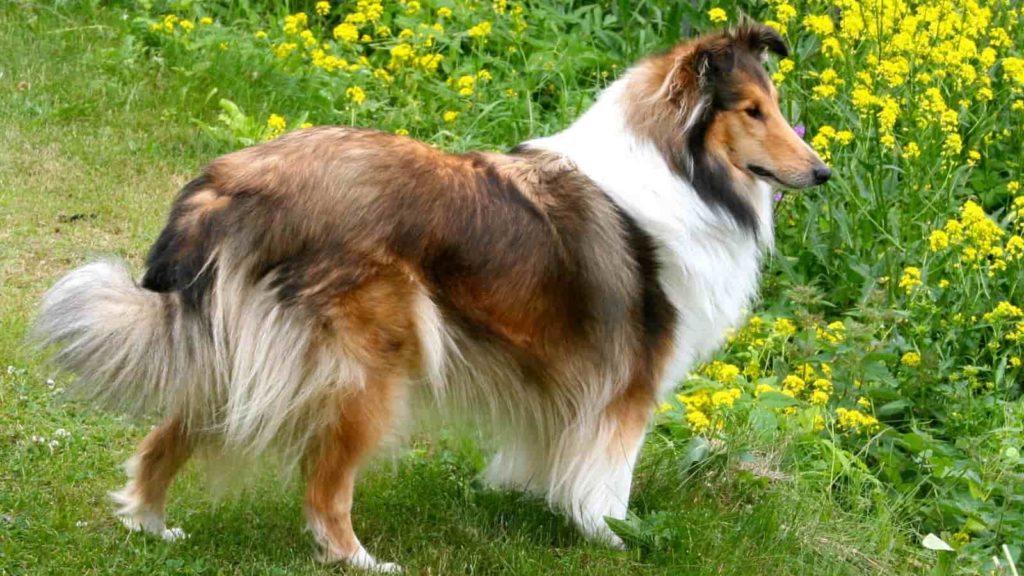
How to Groom A Shetland Sheepdog Tail
Grooming your Sheltie’s tail is fairly simple and similar to how you would groom the rest of them.
- Comb out the hair in their tail to get rid of any dirt or excess matting.
- If you find matts use the proper tools like a dematting comb to carefully get through the tangles.
- Carefully trim the hair no more than a few inches to lay evenly around the entire tail.
- Many owners prefer to leave the tip long and flowing and natural.
You never want to shave your Shelties fur or even cut that hair too short.
Read here about the potentially harmful consequences of shaving your Sheltie.
If you plan on trimming or grooming your Sheltie’s hair yourself then it’s very important to have good high-quality tools to use. This scissor kit is a great place to start and can help you get the high-quality look you are going for.
Shetland Sheepdog Tail Wagging and Communication
Shelties wag their tails for many different reasons. It’s a big part of how they communicate with you.
Wagging their tail doesn’t always mean they are happy. They could be conveying other emotions like nervousness or fear as well.
The key to understanding their tail wags is to put it together with all the other contextual clues they are giving you. What are their ears doing, their eyes, how is their posture? Noticing these things as well will help you know why your Sheltie is wagging its tail.
Here are some things your Sheltie could be communicating to you with its tail.
- Calm and chill – Tail in the natural resting position. Sleeping or resting or casually walking around.
- Greeting or I love you – Usually, a big carefree wag, accompanied by eye contact, coming to you and jumping on you or trying to get your attention.
- Curious or unsure – Backwards and gentle wagging. Maybe sniffing around a little, intense and curious staring. Looking to you for reassurance.
- I’m nervous or scared – The tail between their legs and possibly slightly moving. Body tense, eyes down, ears laid back. Could also be trying to communicate a submissive position.
- Aggression – Tail high in the air and rigid. Poised, rigid, and making eye contact. Could be barking or growling as well.
- Happy and excited – Fast care free wagging. Wiggling body, happy facial expressions. Body not tense, possibly going in circles around the object causing excitement such as a treat or toy.
There’s also been a study done that shows the direction that your dog wags its tail can show positive or negative emotion.
Wagging their tail towards the right side of their body can indicate more positive emotions such as relaxed, and happy. Wagging their tails on the left side of their body is a sign of more negative emotions such as nervousness or fear.
For most Shetland Sheepdogs, wagging their tails to communicate is a natural and normal thing for them to do. On rare occasions, you will find a Sheltie that doesn’t wag its tail at all. Don’t worry, you are not alone. If your Sheltie doesn’t wag their tail it’s most likely just part of their personality or genes.
It could also be temporary due to stress or changes in your Shetland Sheepdog’s life or environment and may go away once things are resolved. However, it may indicate a medical problem, in which case your dog should be seen by your vet to rule out any serious issues.
If your Sheltie is whining or crying a lot then this article is a must read!
If your Sheltie has recently stopped wagging its tail then there are some other things you should consider. If you have just moved, or they are new to your home this could just mean they are nervous and need some time to get acclimated to their new environment.
Some dogs are bigger tail-waggers than others. If your Shetland Sheepdog doesn’t wag its tail at all then you will have to learn to identify other body language cues to help you understand what they are trying to tell you.
Sheltie Tail Problems
Because our dog’s tail is such a big part of them and how they express themselves it can be quite alarming if something seems wrong with it or if they seem like they are in pain.
You should always consult with your vet if you are worried something may be off, but in the meantime, I know that having an idea of what it might be can bring some peace of mind.
Here are some common problems that you might run into concerning a Shetland Sheepdog’s tail.
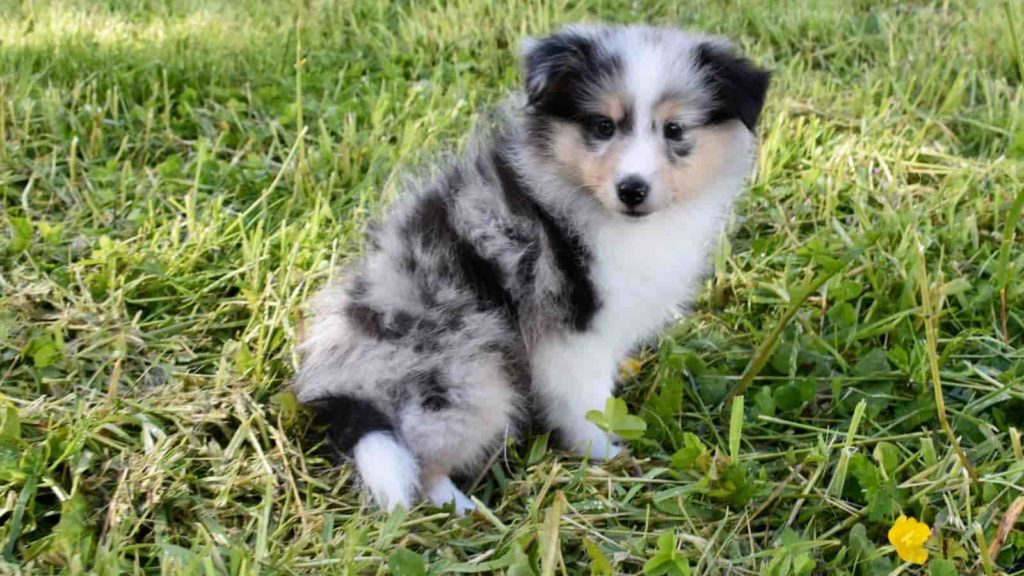
Hair Loss on a Shelties Tail
Hair loss on a Sheltie tail can be caused by several things. Allergies are generally the problem and may cause your dog to chew on its tail. It could also be an infection, mites, fleas, or hormonal issues.
You will want to examine your dog’s tail to see if there are any red or inflamed areas. It’s best to have your vet examine your dog to find the exact cause.
Sheltie Chasing its Tail or Biting its Tail
For the most part, if your Sheltie is chasing its tail it’s most likely just a harmless and adorable game. Puppies tend to do this a lot because they are so playful and exploring more about their world and discovering their fun long tails. If your dog is chasing his tail it might be because he’s bored or it’s just a fun game for him.
Trying out a fun training program together like this widely popular program Brain Training for Dogs can help unlock your dog’s hidden potential and help them learn how to avoid problem behaviors.
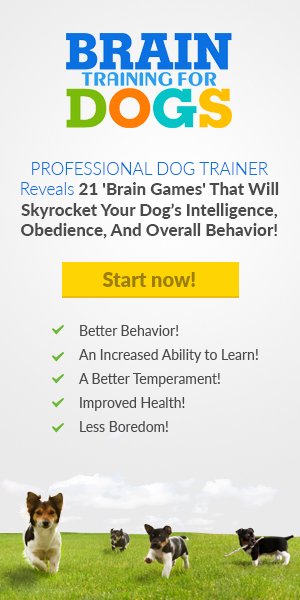
The problem comes when your dog is obsessively chasing its tail and it seems like they are in pain stressed or biting its tail and causing things like bleeding, or hair loss.
If this is the case then rightfully you are probably concerned.
The cause for this could be one of several things. Here are the things that you can look for.
- Impacted anal glands
- Parasites like fleas or ticks in the tail
- Injury or sharp pain somewhere on the tail
- Allergies or itchy skin
- Boredom and in need of more exercise
If your Sheltie is licking its tail read this article that covers everything to know about Shetland Sheepdog licking.
Tail haning down or Limber (Swimmers) Tail
If you notice your Sheltie’s tail hanging down and it looks limp and unnatural then he may have a condition known as Limber Tail.
Limber tail, also known as swimmer’s tail, frozen tail, dead tail, broken wag, or cold tail, is a condition that causes your dog to hold his tail limp and down instead of the usual upright position. Its official name is Acute Caudal Myopathy.
It is most likely to happen after your dog has had a very active or strenuous play, exercise, or excessive tail wagging. Sometimes a lot of swimming can cause it, being in cold wet weather, if they are confined to their crate too long, or if your dog’s tail is wagging and getting whacked on various surfaces.
This could cause your dog pain and swelling in their tail, make it difficult to sit. Usually, this condition will go away on its own after a few days of rest. It’s important to try and limit exercise and movement if you notice that your dog is experiencing this problem. If it is causing your Sheltie a lot of pain then consulting your vet is a good idea.
Usually, this isn’t a chronic problem, but it is a good idea to figure out what may have triggered it in the first place and try to avoid that activity if possible. Coldwater play, or being confined in a crate too long are often things that could trigger this condition.
Pro Tip: If you are not able to get a hold of a vet near you, or you want to avoid an unnecessary ER trip, there are online resources that you can turn to. Here is our best recommendation:
Pawp: a 24/7 digital clinic for pets that connects you to an experienced vet
Why we love it:
🐾 Answers 24/7! 🐾 No waiting! 🐾 Get Answers Online with Local Vets! 🐾 Quick Response Time! 🐾 Easy Sign UP!
Try Pawp 7 Days For Free
How to Keep Poop From Sticking to your Sheltie’s Butt
This can be a common smelly problem for long hair dogs. If it happens often and doesn’t get taken care of it can also lead to serious health issues as well.
Here are some tips to keep your fur baby’s fluffy rear end clean.
- Keep the hair near their rear clean and trimmed.
- Keep wipes handy to clean it out right away.
- Add more fiber to your dog’s diet.
- Check for infections or parasites such as worms.
Taking care of our dog’s most stunning features like our Shetland Sheepdog’s majestic fluffy tails may take a little extra work and know-how, but isn’t it worth it!
Next step: Take a look at these article to learn more about caring for your Sheltie!
Sheltie Ears (Your Complete Guide)
Sheltie Shedding Guide: Top Tips and Tricks!
While we strive to give the most accurate and helpful information about your pet’s health that we can, this article is meant to be informational only and not medical advice. Never disregard, avoid or delay in obtaining medical advice from your veterinarian or other qualified veterinary health care provider regardless of what you have read on this site or elsewhere.


